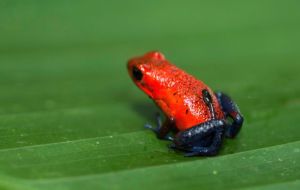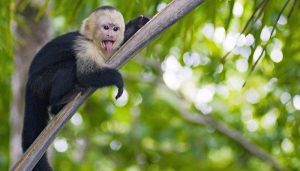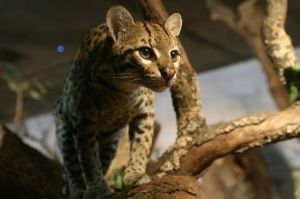Top 5 Interesting Costa Rica Animals

1. Blue Jeans Frog
The blue jeans frog is a unique creature for many reasons but in particular, because of its ability to morph. It can change from red boded and blue legs to green with black spots. These frogs are only toxic in the wild because they create poison from natural elements in the jungle. Despite their small size, these frogs have been quite a successful species and are in no danger of becoming extinct.

2. Coati
This long-nosed brother of the raccoon is also known as the “Snookum Bear.” They are not aggressive and are used to getting really near to people, often hoping to find some food. They have strong jaws and sharp teeth. Like most animals, it suffers from loss of habitat, they are listed as being unthreatened.

3. Capuchin Monkey
Capuchin Monkeys are known to use tools sometimes as means of getting food as weapons. They also will rub plants over themselves for what appears to be herbal medicinal use. This could be one of the reasons for their long life and high population. These monkeys hang out in groups of up to 40 monkeys and can live to be over 54 years old . In Costa Rica, the intelligent primates are easy to enjoy as they are among the most commonly seen animals in the National Parks.

4. Ocelot
Ocelots are nocturnal cats and are about twice the size of a normal house cat. Their light weight and massive feet make them excellent tree climbers. Once listed as vulnerable due to hunting (mostly for their fur), ocelots have had a resurgence and are now not considered a threatened species. However a serious threat comes from the commercial development of its habitat.

5. Three-Toed Sloth
Sloths are among the more unique animals in the world. Known for being incredibly slow, three-toed sloths sleep 16 to 18 hours each day and live high in the jungle canopy, coming down only once a week or so to go to the bathroom. While they walk and move along trees very slow they are actually strong swimmers. When in the trees they do not travel very far usually staying in their home range of about 12 acres and will even spend about 20 percent of its time in one tree. While sloths will actually fight for their territory using their long claws, females will give up their territory to their young after caring for them for their first nine months.

